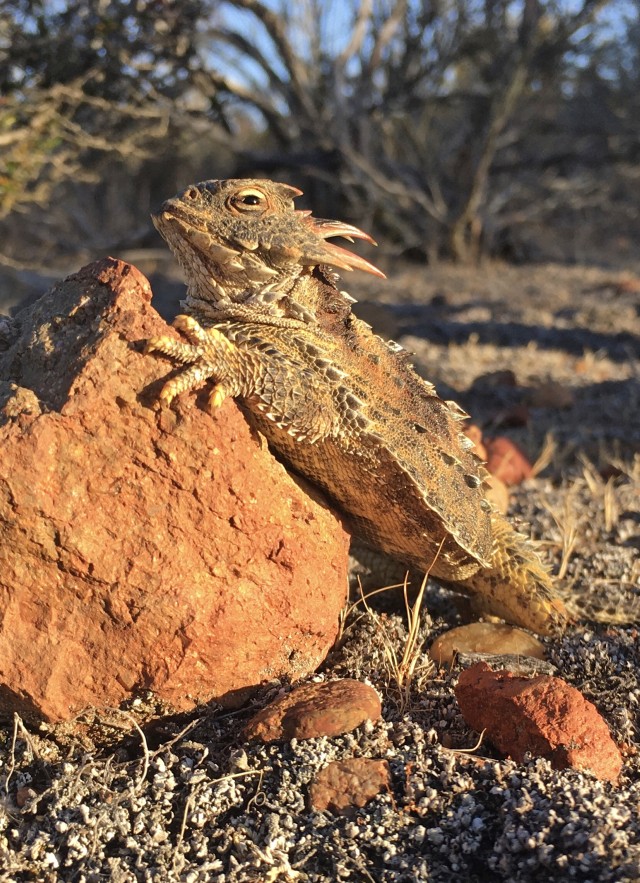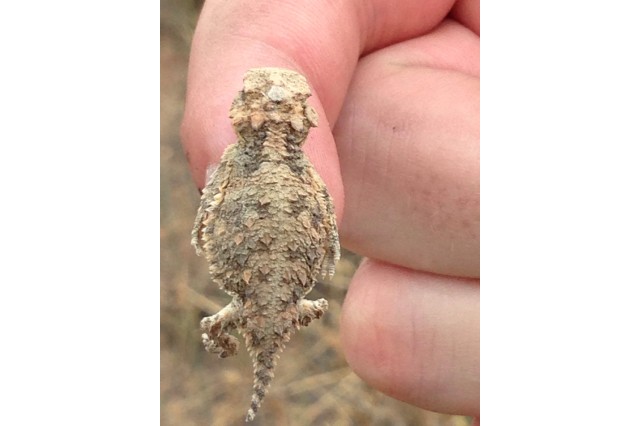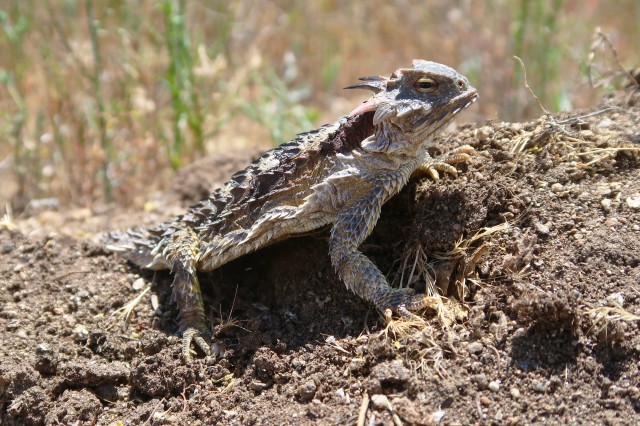Los Angeles, CA (September 13, 2022)— Many species across Southern California have been negatively impacted by urban development, which causes habitat loss and also fragments a once continuous range into isolated pockets of suitable habitat. The small populations surviving in these isolated habitats are at greater risk of local extinction. For many species of conservation concern, there is not adequate information about connectivity among populations to direct conservation and management. However, a new paper published in the journal Molecular Ecology and authored by a team of Southern California lizard researchers offers just such a blueprint for the iconic Blainville’s horned lizard, a species once abundant in foothill communities of the San Gabriel Valley and along the sand dunes from Santa Monica to the Palos Verdes Peninsula.
Spearheaded by graduate student Sarah Wenner and professor Jeanne Robertson at California State University, Northridge, and collaborators from the National Park Service, the Natural History Museum of Los Angeles County, the United States Geological Survey, and the University of Wyoming, the primary goals of the study were to understand the genetic connectivity among horned lizard populations in northern Los Angeles and southern Ventura Counties.
Previously, Blainville’s horned lizards were widespread across much of Southern California, inhabiting a variety of open, sandy habitats from sand dunes along the coast to mixed forest and chaparral scrub in the mountains to the desert slope on the east side of our local mountains. Even through the 1960s, horned lizards could still be found in Pasadena backyards. However, these lizard populations have declined dramatically due to habitat loss from agriculture and urban development as well as invasion by non-native Argentine ants that have displaced the lizard’s preferred food of native harvester ants. “Across Southern California, this species is estimated to have experienced a 45% reduction in its distribution, and in some parts of the Los Angeles area, the declines are far more pronounced,” says Greg Pauly, study co-author and Curator of Herpetology at the Natural History Museum of Los Angeles County. “Our new study highlights that there are small, isolated populations managing to hang on in remnant habitat fragments in and around Greater Los Angeles.”
The authors studied horned lizards in the Santa Monica Mountains, Simi Hills, Santa Susana Mountains, the Topatopa Mountains of southern Ventura County, and the San Gabriel Mountains. Across much of the northern and western part of the study area, the authors found high levels of genetic connectivity even across large distances. Lizards from the Santa Monica Mountains, Simi Hills, Santa Susana Mountains, and Topatopa Mountains were all very similar, suggesting high levels of historical connectivity. Unfortunately, all of these areas are now separated from each other by major highways, such as Highway 101, but the genetic effects of these barriers are limited due to the large lizard populations residing in each area. The threat of inbreeding is more worrisome in the small populations occupying habitat patches in the L.A. area. Isolated populations of horned lizards still occur at Franklin Canyon, Griffith Park, the Verdugo Mountains, the San Rafael Hills, and in the dunes sandwiched between the ocean and LAX.
“These isolated populations are genetically distinct from each other and need increased conservation efforts if they are going to persist in the coming decades,” says Sarah Wenner, the lead author and currently a graduate student at UC Berkeley. “Some immediate management actions to conserve these populations include promoting native vegetation and reducing encroachment by nonnative grasses.” The researchers also recommend starting population monitoring efforts to better estimate the number of lizards remaining in these isolated habitats and how the population sizes are changing through time.
Efforts are underway to improve connectivity and gene flow across urban barriers in the region. “The upcoming construction of a wildlife crossing over Highway 101 at Liberty Canyon will allow some species to have increased movement and genetic exchange in and out of the Santa Monica Mountains,” says Katy Delaney, wildlife ecologist at Santa Monica Mountains National Recreation Area. However, in some areas, the landscape may be so fragmented by urban development that it may not be possible to have habitat corridors connecting isolated populations. “To protect individuals in these isolated habitat fragments, a key conservation strategy is to improve habitat quality in hopes of increasing local numbers and reducing the loss of genetic diversity,'' says Jeanne Robertson, the senior author of the study.
The authors also examined a number of environmental factors that could encourage or restrict gene flow amongst habitat patches. In addition to urban development, fire plays a major role in structuring connectivity amongst populations. Fire has two opposing roles. Fire opens up the landscape and increases the ability for lizards to disperse. As a result, the occasional fire can be important for connecting populations that might otherwise be isolated when the vegetation gets too thick. However, with increasing fire frequency, the sage scrub and chaparral habitats preferred by these lizards in the L.A. area are converted to grasslands dominated by non-native species. With their stout bodies, horned lizards find it difficult to disperse through areas with thick grass cover. Thus, as habitats are converted to grasslands by frequent fires, horned lizard populations will continue to disappear. Given the threat of increasing fire frequency, landscape managers will need to focus on revegetation efforts that will aid scrub habitats in returning and that can keep invasive grasses from taking over.
About the Natural History Museums of Los Angeles County
The Natural History Museums of Los Angeles County (NHMLAC) include the Natural History Museum in Exposition Park, La Brea Tar Pits in Hancock Park, and the William S. Hart Museum in Newhall. They operate under the collective vision to inspire wonder, discovery, and responsibility for our natural and cultural worlds. The museums hold one of the world’s most extensive and valuable collections of natural and cultural history—more than 35 million objects. Using these collections for groundbreaking scientific and historical research, the museums also incorporate them into on- and offsite nature and culture exploration in L.A. neighborhoods, and a slate of community science programs—creating indoor-outdoor visitor experiences that explore the past, present, and future. Visit NHMLAC.ORG for adventure, education, and entertainment opportunities.
MEDIA CONTACT
For interviews and additional imagery, please contact Sally Márquez, smarquez@nhm.org.


